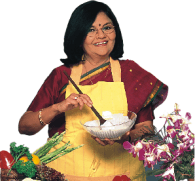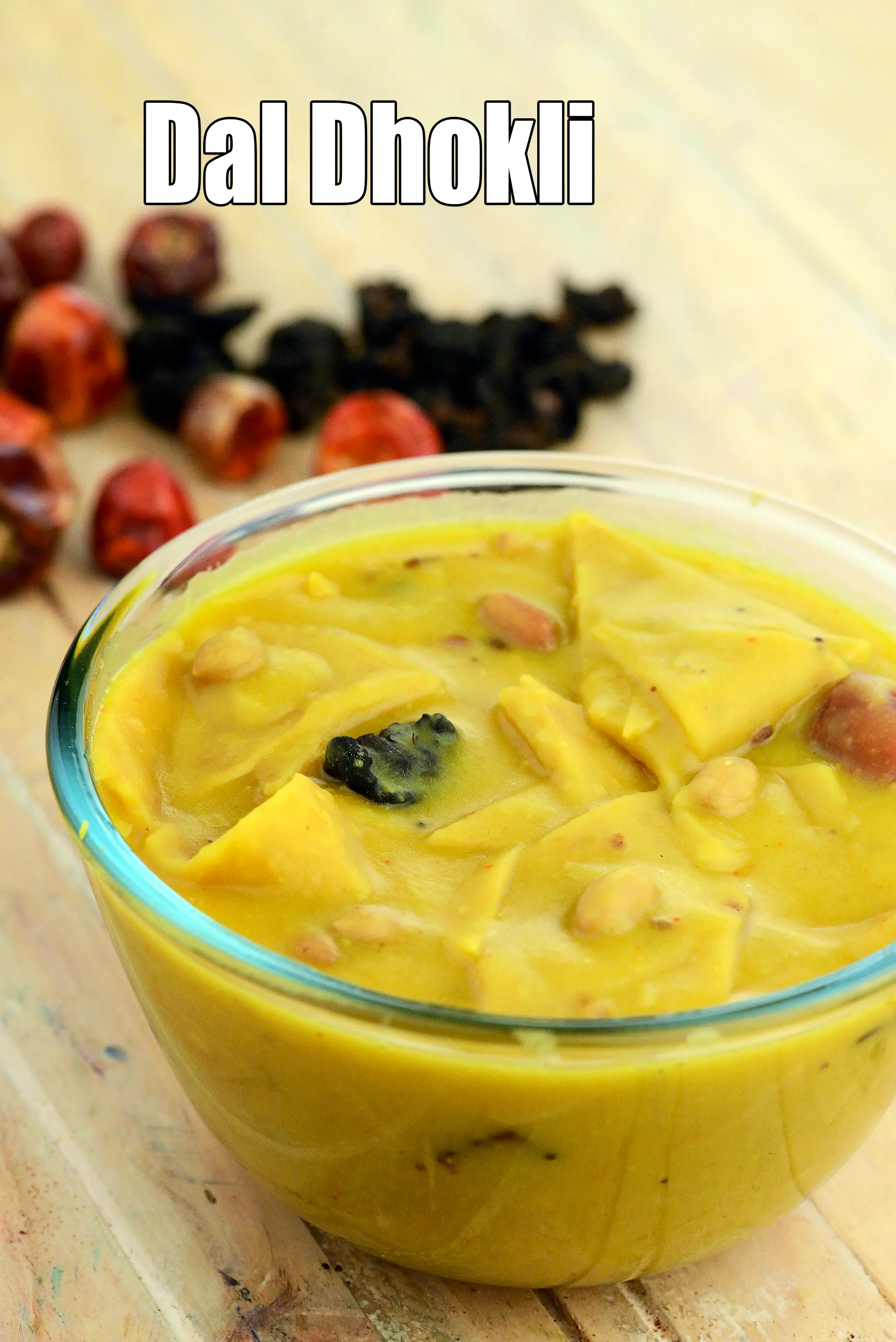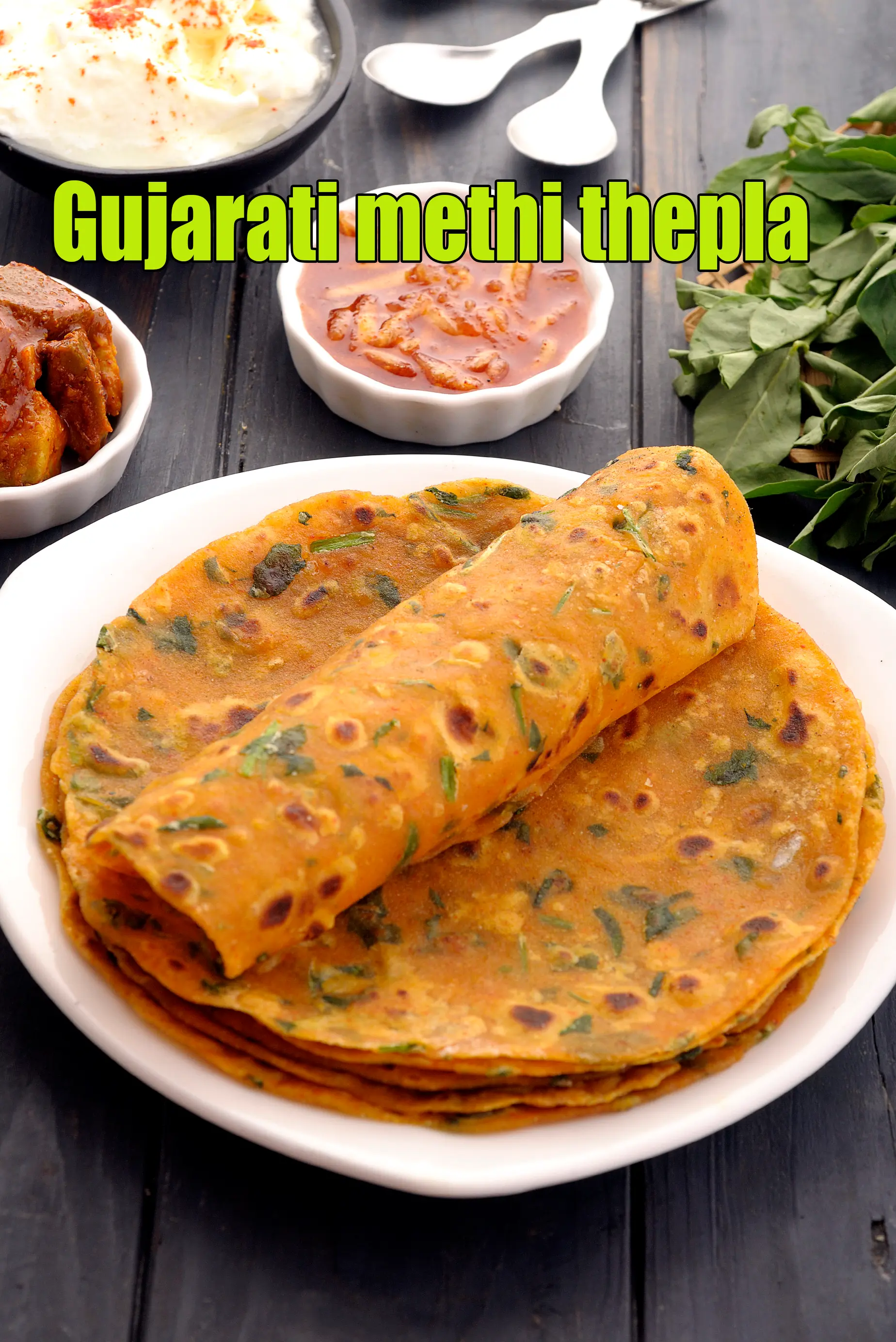Nutritional Facts of Rajma Saagwala, Calories in Rajma Saagwala
This calorie page has been viewed 3646 times
Healthy Indian Recipes
Healthy Indian Recipes
Course
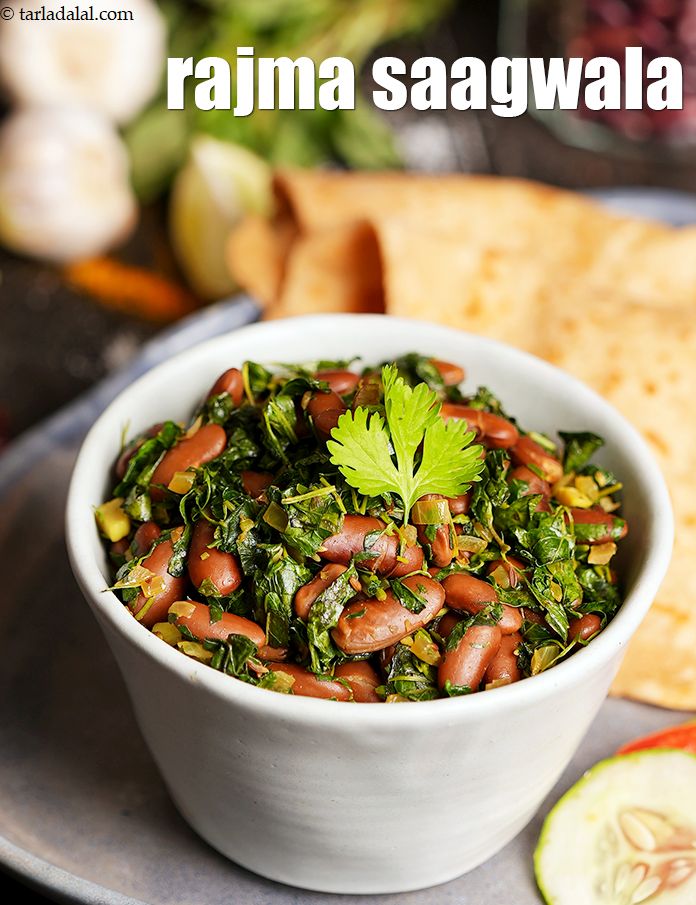
Table of Content
How many calories does one serving of Rajma Saagwala have?
One serving of Rajma Saagwala gives 115 calories. Out of which carbohydrates comprise 65 calories, proteins account for 26 calories and remaining calories come from fat which is 23 calories. One serving of Rajma Saagwala provides about 5.7 percent of the total daily calorie requirement of a standard adult diet of 2,000 calories.
Rajma Saagwala recipe serves 4.
115 calories for 1 serving of Rajma Saagwala, Cholesterol 0 mg, Carbohydrates 16.4g, Protein 6.6g, Fat 2.5g. Find how much fibre, iron, calcium, zinc, magnesium, phosphorus, sodium, potassium, folic acid is present in Rajma Saagwala.
See rajma saagwala recipe | rajma and chawli sabzi | Indian style kidney beans and amaranth leaves stir fry | with 21 amazing images.
Indian style kidney beans and amaranth leaves stir fry made using red kidney beans and amaranth with minimal spices. Learn how to make rajma saagwala recipe | rajma and chawli sabzi | Indian style kidney beans and amaranth leaves stir fry |
rajma saagwala a nutritious protein and fibre rich sabzi that's delicately flavoured. rajma and chawli sabzi features a unique combination of veggies, simply but tastily flavoured with everyday ingredients. Iron-rich chawli leaves come together with rajma, which gives not just more nutrition but also a good texture and taste to the subzi.
As we all know, Amaranth leaves are super loaded with tons of nutrients, also rajma which has a good amount of protein and fibre which makes this sabzi a very healthy side dish for phulkas or paratha to be packed in lunchbox for kids.
Tips to make rajma saagwala: 1. You can cook the rajma in advance and keep in the fridge. 2. Instead of amaranth leaves you can use palak or fenugreek. 3. Instead of refined oil you can use olive oil to make the sabzi healthier.
Is Rajma Saagwala healthy?
Let's understand the ingredients.
What's good.
Rajma : One cup of cooked kidney beans has 26.2% of your daily Magnesium requirements. Rajma is a complex carb and rich in Fibre which helps in Lowering Cholesterol levels. Rajma is rich in Potassium which is critical for those with High Blood Pressure as it lessens the impact of sodium. Eating rajma is good for diabetics due to being a fiber rich food. See here for 10 health benefits of rajma and why you should eat it.
Chawli Leaves, Amaranth Leaves : It helps reduce the bad cholesterol (LDL) from the body. Moreover it also has some amounts of potassium and magnesium, the two nutrients which maintains heart health. Chawli Leaves Good for Anaemia. With a whopping amount of 32.2% of Vitamin A requirement of RDA, chawli leaves can in truth work towards improving vision. It’s the fiber found in amaranth leaves which is good for the gut and to overcome constipation. See detailed benefits of chawli leaves.
Onions (pyaz, kanda) : Raw onions are a very valuable source of vitamin C – the immune building vitamin. Along with other phytonutrients from onions, it helps to build WBC (white blood cells) which serves as a line of defence against illness. Yes, it’s a source of many antioxidants, the most important one amongst them being Quercetin. The quercetin in Onions promotes production of HDL (good cholesterol) and lowers total cholesterol in the body. The sulphur in onions act as a blood thinner and prevents blood clotting too. This in turn would lower blood pressure and good for heart, diabetics. Read the benefits of onions.
Coconut Oil : Use coconut oil instead of processed seed oils like soyabean oil, canola, sunflower oil, corn oil and other omega-6 rich oils should be used in very low amounts. Coconut oil is a medium chain triglycerides (MCT’s). Unlike other fats, they go directly from the gut to the liver. From here, they are then used as a source of energy. As the calories in MCT’s are used straight away, they are less likely to be stored as fats in the body. MCT's have shown to improve your brain and memory function, they also give a boost to your energy levels and improve your endurance. The MCT in Coconut oil reduces the LDL cholesterol (bad cholesterol) while increasing the count of HDL cholesterol, maintaining normal blood pressure and good for diabetics. See detailed benefits of coconut oil.
Can diabetics, heart patients and over weight individuals have Rajma Saagwala ?
Yes, this recipe is good for diabetics, heart and weight loss. One cup of cooked kidney beans has 26.2% of your daily Magnesium requirements. Rajma is a complex carb and rich in Fibre which helps in Lowering Cholesterol levels. Rajma is rich in Potassium which is critical for those with High Blood Pressure as it lessens the impact of sodium. Eating rajma is good for diabetics due to being a fiber rich food.
Can healthy individuals have bajra methi paneer paratha ?
Yes. Amaranth Leaves : It helps reduce the bad cholesterol (LDL) from the body. Moreover it also has some amounts of potassium and magnesium, the two nutrients which maintains heart health.
Rajma Saagwala is rich in below macronutrients, vitamins and minerals given in descending order (highest to lowest).
- Vitamin C : Vitamin C is a great defence against coughs and colds. Have citrus fruits, lemons, vegetables ( capsicum, broccoli, cabbage). Not all of the vitamin C is lost when vegetables are cooked. Some studies have shown that up to 50% of the vitamin C can be retained, depending on the cooking method and the vegetable. Cook vegetables quickly. The longer vegetables are cooked, the more vitamin C they will lose. 134% of RDA.
- Folic Acid (Vitamin B9): Folic acid is an essential vitamin required throughout pregnancy. Folic acid rich Indian foods (kabuli chana, chana dal, yellow moong dal, urad dal, tooval dal, til ). 76% of RDA.
- Vitamin A rich recipes, Beta Carotene : Vitamin A is crucial for healthy vision, cell growth and healthy skin. Sources of vitamin A include yellow-orange fruits and vegetables like carrots, mango, papaya, peach, tomatoes, pumpkin etc. and other vegetables like spinach, kale, fenugreek leaves, broccoli, capsicum etc. 59% of RDA.
- Calcium. See Calcium rich recipes : Calcium is a mineral that makes bones stay strong. See our list of calcium rich Indian foods. Dairy products: Like milk, curds, cheese, paneer and buttermilk. Green leafy vegetables like spinach, fenugreek, broccoli. Nuts and ragi. Required from kids to adults. 43% of RDA.
- Phosphorus : Phosphorus rich Indian foods works closely with calcium to build bones. Phosphorus rich Indian foods like dairy products ( milk, paneer, curd), nuts, seeds, jowar, bajra, moong, matki, oats, ragi, wheat flour etc. 19% of RDA.
| Energy | 115 cal |
| Protein | 6.6 g |
| Carbohydrates | 16.4 g |
| Fiber | 3.1 g |
| Fat | 2.5 g |
| Cholesterol | 0 mg |
| Vitamin A | 2835.5 mcg |
| Vitamin B1 | 0.1 mg |
| Vitamin B2 | 0.1 mg |
| Vitamin B3 | 0.5 mg |
| Vitamin C | 53.7 mg |
| Folic Acid | 151.6 mcg |
| Calcium | 259.4 mg |
| Iron | 2.9 mg |
| Magnesium | 40 mg |
| Phosphorus | 116.1 mg |
| Sodium | 118.4 mg |
| Potassium | 460.1 mg |
| Zinc | 1 mg |
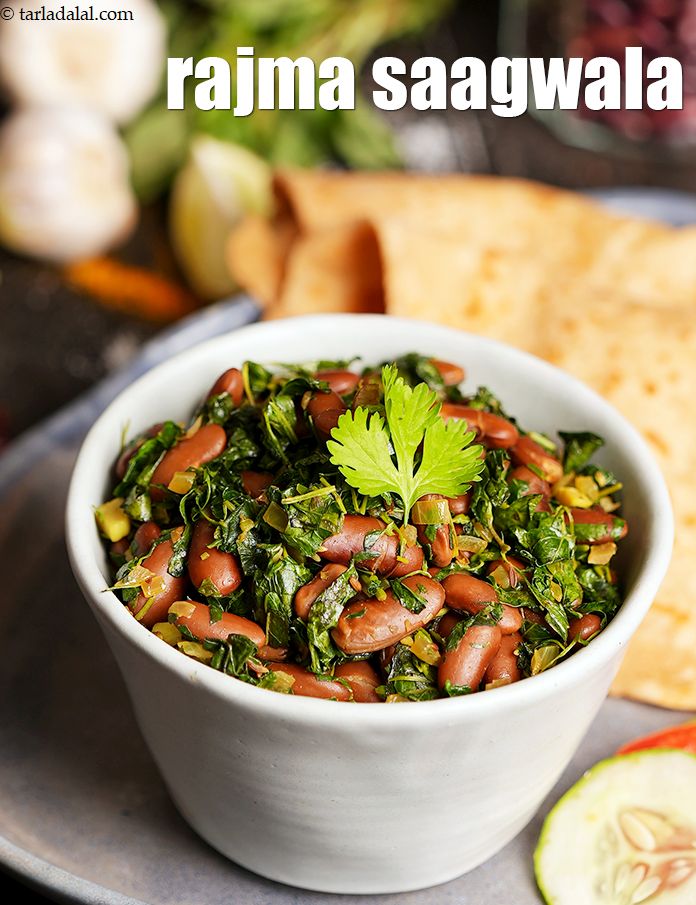
Click here to view Rajma Saagwala
Calories in other related recipes
